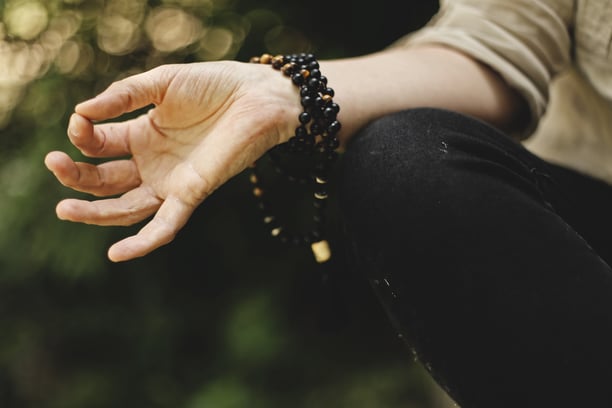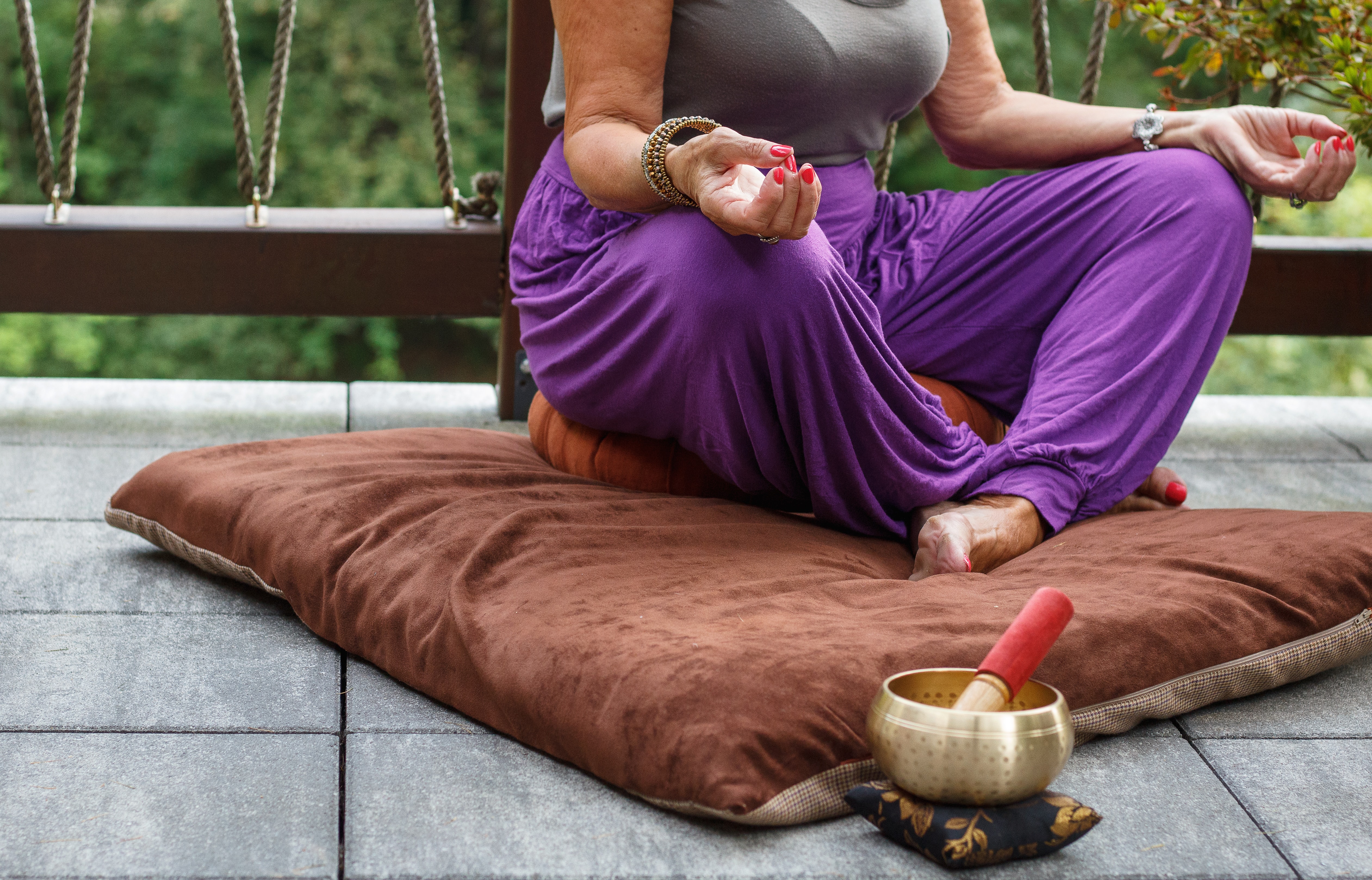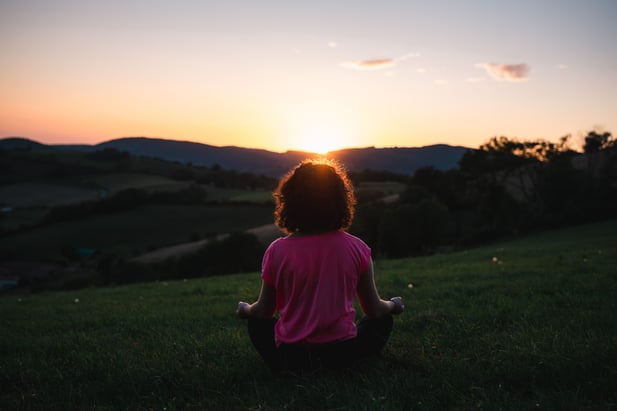I started meditating with a strong desire to be more conscious, to wake up and to better understand the mystery of Mind. I loved the crystal clarity that I’d experience on a meditation retreat. Yet, I only went on retreat a few times a year and it just wasn’t enough. After finding a teacher and beginning regular meditation practices, I began to feel the results of greater calm, clarity and joy.
What exactly is meditation and what are the benefits?
Meditation as a tool to train the mind, to be more aware. To bring us back to our experience in the moment. A tool that guides us to observe and question thoughts, feelings and ways of being that we identify with. The secret sauce behind getting results with meditation is twofold.- Intention. You sow what you seed.
- The proof is in the pudding. Just do it.
The ultimate benefit of meditation is awakening in this lifetime. The Buddha taught that awareness of breathing is a direct path to awakening. Some awesome side benefits I noted above are greater joy, calm, and clarity.

What is mindfulness and what are the benefits?
Like meditation, mindfulness practice can take us out of habitual mind and into the present moment. Mindfulness helps us to develop awareness. Often the motivation behind this practice is to feel less stressed, have more confidence and/or be more healthy. The mindful mind is aware and lives in the relative. The meditative mind yearns to explore, is aware of it’s awareness and rests in the absolute.
Why should I practice meditation at home?
Having a sacred space at home for your meditation cushion where you can center, ground and explore your experience is strengthening. When we integrate meditation into daily life it supports us to bring calm and clarity into areas of our lives which may otherwise remain untouched. The added bonus is that a daily practice lightens our load, propelling us more quickly and deeply into calm and concentration when we do go back on retreat.
What are the main types of meditation techniques?
There are 7 kinds of meditation. Six are calming and focus concentration. These are: breathing, visualization, chakra (point or area), mantra (sound), mudra (movement) and devotional.
The 7th kind of meditation is insight, probing the essence of mind.
Once the mind is calm and focussed, it’s now able to investigate. This is where a koan or a question is used, to spark new understandings about the nature of mind and the human experience. Main meditation techniques I like to use are breathing, mantra and loving-kindness. Body scans are always helpful, too.

What are three key tips for meditation for beginners?
- Start with regular and short sessions
- Find other meditators to sit with, especially ones who can support and guide you like a meditation teacher
- Let go of the idea that you’re doing it wrong
Meditation practice to do at home
A key for meditation is posture.
Posture determines how our head is positioned and therefore our view on life. When we look in front with a soft aware gaze, we can see the present moment. When we don’t honour our body by hunching over for example, we close off energy pathways to the heart and our openness decreases. We may experience anxiety, negative thoughts and mistrust. And when we lengthen the spine, open the chest and relax our shoulders, we open ourselves to experience and our confidence expands.
The best way to understand posture is to become aware of how your body shows up and to become curious about it. To explore posture, pause frequently and notice your posture. Remember, and this may seem counter-intuitive, you don’t need to change anything, just notice it. Then, raise the question, what is this posture communicating? Listen, watch and move on.
There are many resources that describe meditation postures you can find online, these are helpful, however we also encourage listening to the natural wisdom of your body and being aware of the head posture and spine. This will help you naturally find alignment.
.jpg?width=612&name=pexels-andrea-piacquadio-3760611%20(1).jpg)
Breathing:
This is one of my favourites, “Clear Sky Mind Meditation”. It’s a metaphor for the natural state of mind that is awake, and coincidentally, what we named the retreat center I was a cofounding member of. Clear Sky Mind refers to big “M” mind. It is spacious, clear and boundless. Although events like clouds, hail, wind, rain and other weather formations frequently pass through the sky, they are temporary. They are not the sky and we do not cling to them. In this metaphor the Clear Sky Mind is consciousness. The weather formations are life passing through: thoughts, feelings, jobs, relationships, illnesses, holidays, etc.
When we place the Clear Sky Mind centerstage in the spotlight, we are less bothered with all that transits through the sky. We begin to appreciate and rest into our natural state of being, one which is luminous, alive and spacious. Being attentive to the breath, brings us into greater awareness of and contact with Clear Sky Mind.
- Begin with some light exercise to oxygenate the blood and to wake up your mind and body.
- Choose how long you will meditate for and start the timer. (structure and routine are our friends, so start with short and frequent sessions, gradually increasing the length of time.)
- Bring awareness to the body and find your best posture, adjust as needed so that you are comfortable.
- If you are dopey, open or half-open your eyes. If you are over stimulated, half-close or close your eyes.
- Set your intention.
- Place the attention on the breath at the tip of the nostrils or the rise and fall of the belly.
- Attend to the breath’s every inhalation and exhalation. Can you notice the gap as it moves from inhale to exhale or vice versa?
- Any time the mind wanders and moves off the breath to follow a story (a cloud, “little m” mind), gently bring the attention back to the breath (“Big M” Mind, the Clear Sky Mind).
- Without judgement, repeat as often as needed to bring you back to the present moment, the breath. Remember perfection is not the goal – waking up to increased awareness and presence is.
- Stop the timer.
- Review. What patterns did you notice?
- Share the merit so that your efforts are dedicated to to benefit yourself AND all beings.

Walking Meditation:
As I spend a lot of time on the computer, this meditation is a staple for me and can be done anywhere.- Stand upright with both feet solidly placed on the earth.
- Place your attention in the soles of your feet, breathe and relax.
- Allow yourself to sink into the earth. Allow the ground to hold and support you.
- Lengthen your spine so that it’s alert yet relaxed.
- Place your hands in front or behind the body. (the left hand generally grasps the right wrist, however, if this makes you tense, just let your hands hang loose at your sides.)
- Keep a gentle gaze about 10 feet in front, looking slightly downward. This builds calm and concentration. It also trains the mind to be here and now, in the present moment.
- As you move each foot, with awareness in the soles of your feet, name each movement as it happens: lifting, moving, placing.
- Be present with each moment of lifting, moving, placing.
- Repeat…
Mindfulness practice to do at home
-
Stop what you’re doing and bring awareness to your body, in this moment. Feel the sun/wind, water and/or snow on your skin.
Pay attention to sound in your environment. If you are in a noisy city for example, don’t try to shut the noise out. Allow yourself to become aware of and experience each sound around you. If there are sounds around you of traffic, or children or people's voices for example; imagine yourself welcoming in each sound and watching it pass through your awareness. Don’t hold on to any one sound in particular.
Notice how the body responds to different food. How many smells and tastes can you identify? What can you smell and taste? Where on your tongue can you taste what you’re eating?
How do I keep my meditation practice alive at home?
There are a few simple things you can do to keep your meditation game strong at home.- Keep your meditation space clean and cared for supports an alive practice.
- Small changes can make a world of difference. Try bringing in a beautiful object or flower to uplift the space. Watch how your headspace is affected.
- Meditate six days a week, not seven. Although there are times to practice daily, like when you go on a meditation retreat, one day a week, without formal mind training is refreshing. It also allows you to integrate your meditation experiences and inspires you to return to the cushion, again.
Most importantly? Celebrate and praise yourself for doing the work. Express gratitude for it. And don’t beat yourself up if you missed a day, a week or even a month. You’re striving to call in balance, harmony and the abundance of other benefits that meditation and mindfulness bring. That alone is a powerful thing that some beings never experience in their lifetime.
You’ve got this.
.jpg)